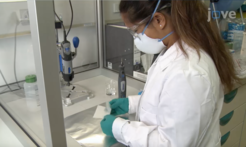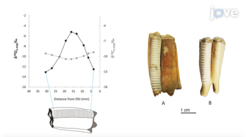Stable Isotope Group demonstrates sampling and pretreatment of tooth enamel carbonate for stable carbon and oxygen isotope analysis
The Stable Isotope Group at the Max Planck Institute for the Science of Human History has published a thorough written and visual demonstration of techniques for bulk and sequential sampling of tooth enamel carbonate in the Journal of Visualized Experiments (JoVE).

Stable carbon and oxygen isotope analysis of human and animal tooth enamel carbonate has been applied in paleodietary, paleoecological, and paleoenvironmental research, to analyze samples from recent historical periods to over 10 million years ago. Bulk approaches provide a representative sample for the period of enamel mineralization, while sequential samples within a tooth can track dietary and environmental changes during an individual’s lifetime. While these methodologies have been widely applied and described in archaeology, ecology, and paleontology, there have previously been no explicit guidelines to aid in the selection of necessary lab equipment and to thoroughly describe detailed laboratory sampling and protocols.
The video and article document the entire process, from sampling through pretreatment and diagenetic screening, of stable carbon and oxygen isotope analysis of tooth enamel carbonate. This publication makes the methodology widely available to researchers considering its application in a variety of laboratory settings.


